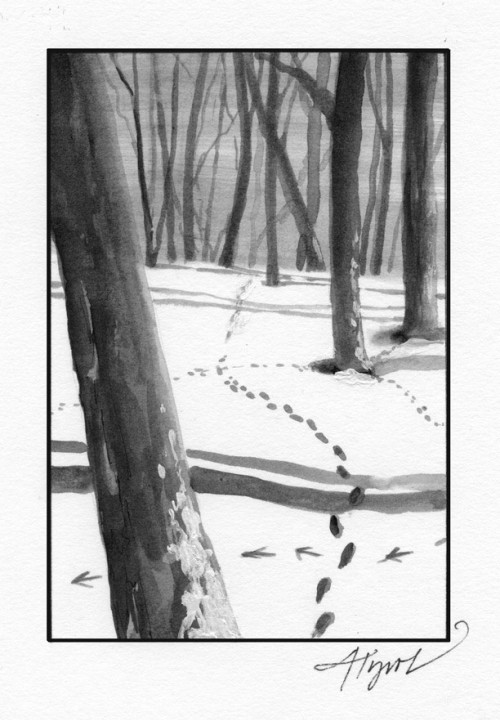
Five years ago, my wife, Sue, and I swallowed hard, signed a contract on the advice of our forester, and invited loggers onto our land. We’d never had logging done before, so we were nervous.
The loggers showed up with a whole-tree chipper the size of a small building, several skidders and cutting machines with signs saying “keep back 500 feet,” and a fleet of 18-wheeled trucks. They proceeded to slash their way into the forest, dragging out whole trees and stuffing them through the chipper, feeding truck after truck with chips. There were trees and tree parts everywhere, since every tree that made it into the chipper seemed to leave behind an equal volume of broken stems and branches. The carnage lasted two weeks.
Sue and I were delighted.
Lest you think we’re crazy, here’s why: our forest has been transformed. Where once, five years ago, we used to see only occasional deer and turkey tracks, we now see so many tracks that we need to bring a field guide. (The sledding tracks of otter are this winter’s prize find.) Where once the forest looked crowded and crooked, we now see towering pines and spreading oaks. And where there used to be a sparse understory of spindly stems, we now have an amazing fuzz of sprouting white pines, a four-foot-tall shag rug of green saplings.
Prior to the logging job, our hillside was very typical of hillside forests all across New Hampshire and Vermont. It started growing back from pasture in the nineteenth century. Nobody did much in the way of management except to go out and cut the good-looking stuff every twenty years or so. This went on for a century at least.
The result of “cutting the best, leaving the rest” was that our forest was uniformly middle aged. There were very few giant trees and very few saplings. The trees we did have were, by and large, the broken and twisted trees that hadn’t excited the loggers over the years.
The work that our loggers did five years ago was a reverse of this – they left the best and cut the rest, opening up the forest to a new generation of saplings and wildlife. In order for them to accomplish this, however, since we weren’t willing to subsidize their efforts, they needed to sell the low-value wood, and they found a market up the river in Ryegate, Vermont, where the 22-megawatt biomass energy plant turned the chips into electricity.
Yes, this was a biomass harvest.
New biomass plants are now being proposed in both New Hampshire and Vermont. Depending on which op-ed you read, expanded biomass is either going to lead to clearcutting an area the size of the White Mountain National Forest or is going to require nothing other than waste wood that happens to be lying around.
In reality, neither of these things is likely because neither approach makes good ecological or economic sense.
The limbs, needles, and broken wood lying around after a harvest, the very stuff that people assume ought to be utilized for biomass since it’s “waste”, contain nutrients that are essential for forest regrowth. While each site is different, researchers believe that you always want to leave at least a third of this material behind in the woods, not only for forest health but also to provide important habitat for salamanders, toads, and the like.
Clearcutting, meanwhile, is not the way most of our hardwood forests are managed in New Hampshire and Vermont. That’s because the best trees for lumber are grown in close competition with one another, not out in the open, and most forestland owners in the region are currently managing for sawlogs, a much more valuable commodity than chips. Sending everything, including the best trees, through the chipper is akin to sending dollar bills through the chipper, removing the most beautiful trees (and best tree genetics) in the process.
Which is why the typical biomass harvest in the twin states is very much like the harvest we had on our land five years ago: selective thinning of the least valuable wood, leaving the best trees, and much of the slash, behind. It’s not something you’d want to do frequently, since you are removing more nutrients than you would when harvesting just sawlogs, but it is a great option to have for improving forest diversity for the future.
I forgot to mention one other species that’s taken a fancy to our logging job: our neighbors. In a winter like this one, I almost have to go out while it’s still snowing to be able to make fresh tracks on the logging roads. Otherwise, someone will have beaten me to it on their skis, snowshoes, or snowmobile.

